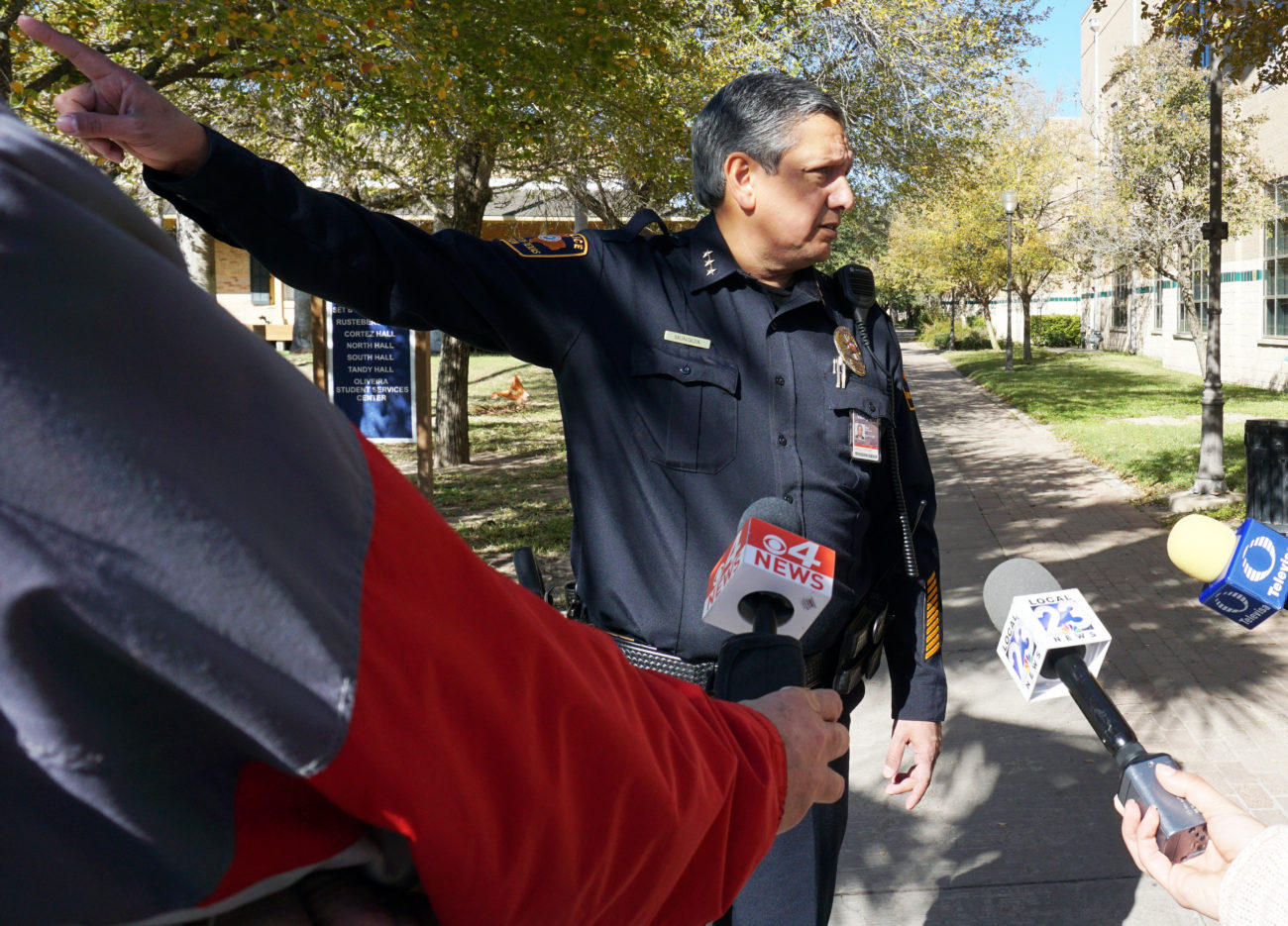Shots rang out twice Wednesday morning on the University of Texas Rio Grande Valley campus in Brownsville, sparking a coordinated response from the UTRGV Police Department and its law enforcement partners across the city.
Only a few of the dozens of officers who converged on the student union and surrounding area just after 10 a.m. knew exactly the script that events would follow over the ensuing minutes, but everyone, including the students who volunteered, knew it was a Full Scale Emergency Preparedness Drill to test their readiness should the event have turned out to be real, UTRGV Police Chief Raul Munguia said afterward.
“We want to make sure we stay on top of the policies and procedures on how to react to such an event. In doing so we know that no one police agency can respond by itself, and so we have to reach out to our law enforcement partners” to meet the challenge, Mungia said.
UTRGV police conduct an Advanced Law Enforcement Rapid Response Training, or ALERRT, drill annually, Munguia said. Planning for this year’s drill began in January, not long after a drill similar to Wednesday’s was conducted on the Edinburg campus.
Munguia said the drill’s purpose is to “test the ability of officers to respond. We’re testing the ‘muscle memory’ of the officers to react as trained.”
Within minutes of what sounded like gunfire coming from the student union, five officers arrived at the building’s northwest corner and began to approach the perimeter, rifles drawn. Soon a Department of Public Safety helicopter was hovering overhead. Then, gradually, steadily, officers from other departments arrived on the scene between the student union and the university bookstore.
Within three minutes the active shooter and a group of others had fled to the bookstore, from which shots rang out again. Major participants in the drill included the Brownsville Police Department, DPS, Brownsville Independent School District police, U.S. Customs and Border Protection, and Cameron County law enforcement among others, Munguia said.
He added that UTRGV police, the lead agency, had received ALERRT active shooter training at Texas State University in San Marcos
“Communication is a big part of the puzzle. With all the other officers arriving from other agencies we wanted to make sure we had some familiarity with each other and with the campus,” Munguia said. “We wanted to keep the drill as real as possible,” he added.
The main takeaway for anyone who finds themselves in an active shooter episode “is don’t rationalize,” that is, think it’s not real, Munguia said.
“You can lose 45 seconds quickly. You need to make it hard for the shooter to get to you. We have officers on duty on campus at all times, so you need to buy yourself a couple of minutes while we neutralize the situation. … Typically the shooter will commit suicide or be killed. It all hinges around the first officers arriving on the scene.”







